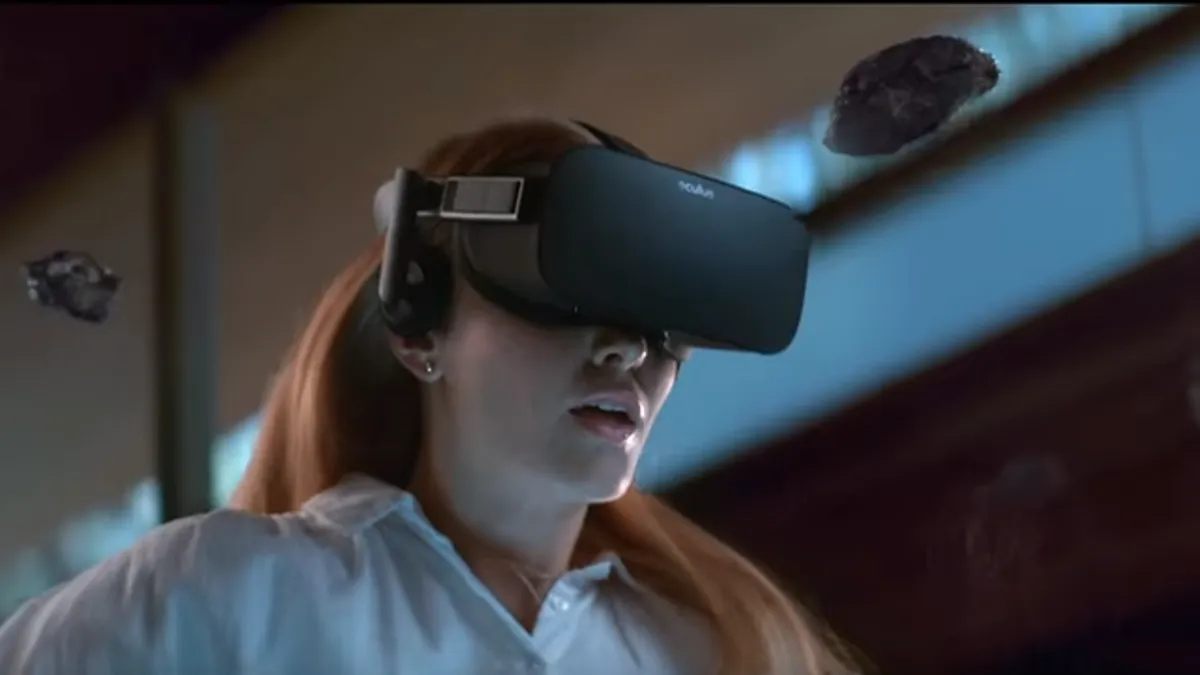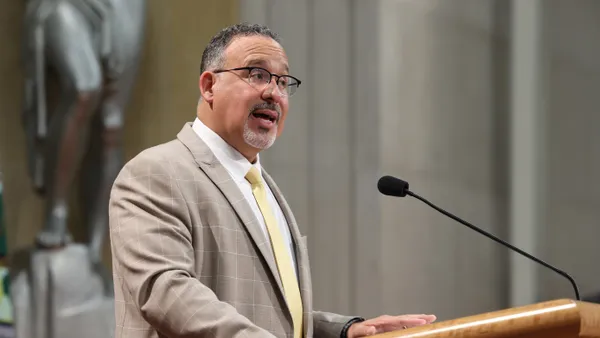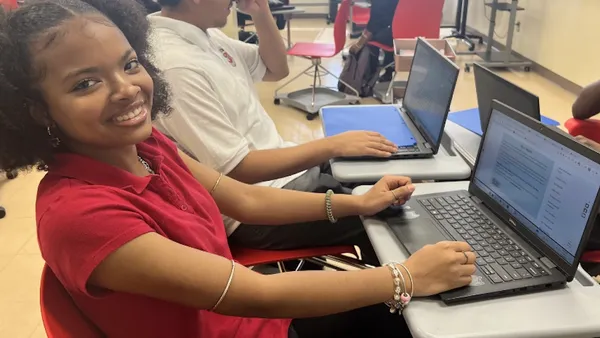Dive Brief:
- Colleges and universities find it isn’t easy to get faculty to use immersive technologies, but some are having success by introducing them to the new tools in creative ways. Campus Technology recently reviewed the efforts by some institutions to move educators toward using the new technology.
- Officials advocating for use of immersive technology at institutions point out several hurdles that are hindering its development – from tight budgets for these less-accepted teaching methods, to finding time to instruct professors how to use them.
- They have improved the response by introducing virtual reality or immersive experiences in casual settings to faculty members, by showing them examples of how it can be used and by proving its value by gathering data about its effectiveness in the classroom.
Dive Insight
At Virginia Polytechnic Institute and State University, the Cube was launched three years ago as an adaptable immersive lab that faculty members could use in courses. However, project directors found they had to meet a variety of needs and skill levels with the technology. “Someone could come in just needing to hook up a video and I could help them do that, or they could come in with a full project that is going to take two years to develop and I could help them with that, too," said Zach Due, who served for a year as the lab’s immersive environment specialist, which he added is a position offering guidance that has been key to success.
Officials at North Carolina State University’s Teaching and Visualization Lab have invited faculty members to coffees to see presentations, and Pennsylvania State University welcomes faculty members to a number of immersive facilities at its campuses. Instructors at Penn State are using the technology in creative new ways (one urban design class travels virtually to Rio de Janeiro to see the unique hillside community it is studying), as well as developing research on its effectiveness to show its value and guide its direction.
Ohio University’s Game Research and Immersive Design Lab is opening a new VR classroom, finding that the technology is now much more affordable. A university official said that when the school first experimented with the technology 13 years ago, a VR helmet cost $12,000 and other equipment cost $20,000, but today a laptop, the necessary software and a headset can be purchased for less than $2,000.














